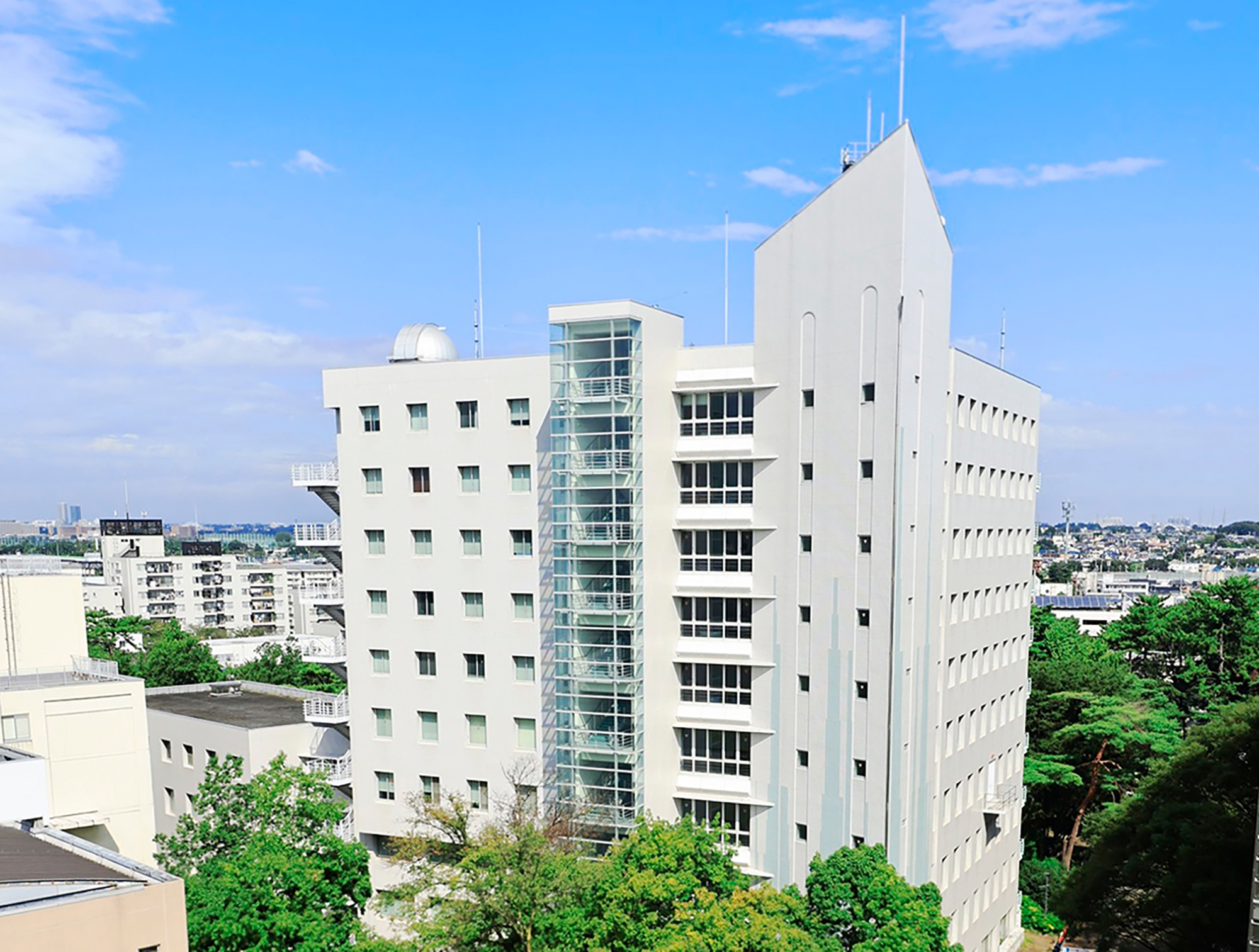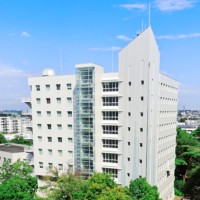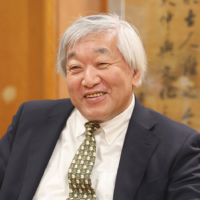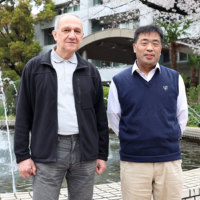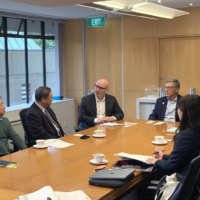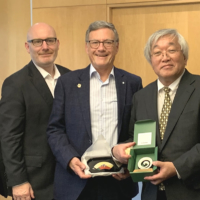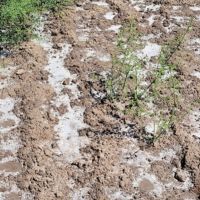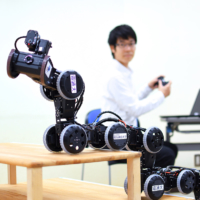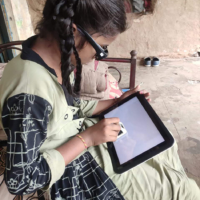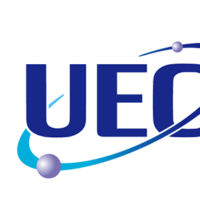The University of Electro-Communications (UEC) is known for its broad range of education and research, from basic science and engineering to applications including physical engineering, materials science, the life sciences, optical science, electronics, robotics, mechanical engineering and media. It has attracted global attention in recent years for snake-like robots developed by professors Motoyasu Tanaka of the Department of Mechanical and Intelligent Systems Engineering. The robots were used to take pictures of debris inside radiologically contaminated areas in the Fukushima No. 1 nuclear power plant, hit by a huge tsunami in 2011. In addition, professor Kaoru Minoshima of the Department of Engineering Science is conducting research on an “intelligent optical synthesizer” that makes maximum use of light. A wide range of applications are progressing, including instantaneous 3D imaging that can rapidly acquire high-precision 3D images at the nanometer level of a meter-size target, which has high applicability spanning fields from industry to medicine.
Having its roots in the Technical Institute for Wireless-Communications, founded in 1918 by the Wireless Association to train engineers, UEC was established as a national university in 1949. “Given our name and the purpose of foundation, you may think we specialize only in the fields of electricity and communications, but we have been evolving and expanding to meet the needs of the changing society to cover wider areas of expertise,” UEC President Shunichi Tano said in a recent interview with The Japan Times.
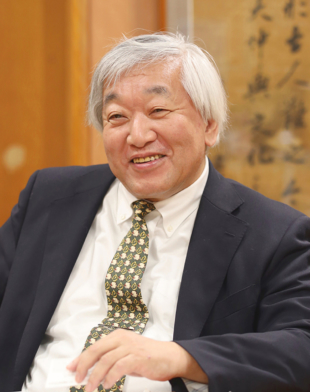
The university’s undergraduate school has three clusters with different focuses. Cluster I is informatics and computer engineering, which has five programs for students to choose from starting in their third year: media science and engineering, management science and social informatics, mathematical information science, computer science, and design thinking and data science. Cluster II is emerging multi-interdisciplinary engineering, with five programs: information security engineering, information and communication engineering, electronics and information engineering, measurement and control systems, and advanced robotics. Cluster III is fundamental science and engineering, which also offers five programs: mechanical systems, electronic engineering, optical science and engineering, applied physics, and chemistry and biotechnology. The graduate school also offers a broad range of research possibilities in practical science and technology.
‘Society 5.0’ and the UEC Vision
“Among all that we offer, the areas that we are especially good at and which are attracting attention from academia and society are fields related to artificial intelligence, networks, robotics, and optical and quantum technologies,” Tano said. This is because these are fields that will contribute to the realization of the “Society 5.0” that the Japanese government has been advocating as the future society that will succeed the current information society.
However, explanations of Society 5.0 have tended to be abstract and obscure, with the Internet of Things often cited as one driver of improvements for society. But what exactly needs to be done? Tano stressed the need for clearer, more detailed explanations to help steer society toward achieving its aims.
This is why the university’s UEC Vision – Beyond 2020, defining the future society under the Society 5.0 concept, said it aims for a “smart society based on co-creation and evolution.” To realize this, it wants to become a “supersustainable platform” that facilitates the autonomous circulation of data, its analysis and the social implementation of new findings.
“First things first: Data and functions need to be openly connected via networks,” Tano said. “When this is achieved, the amount of data handled by various functions in society will be so vast that it will be impossible for humans to watch over everything, so artificial intelligence, acting as a partner to humans, will supervise and suggest a lot of hypotheses that will be reviewed and made into new rules by humans to implement in society.” This will enable society to constantly improve itself based on real-time data fed into open networks.
“Our university is good at all three key points in this framework: first, networking data and functions, second, facilitating collaborations between artificial intelligence and humans, and third, control and security in social applications,” Tano said.
Three-pronged strategy
In the UEC Vision, the university says it will implement a “D. C. & I. strategy” of diversity, communication and innovation in every field — it will continuously create “sustainable innovation” through respect for and expansion of “pluralistic diversity” and broad collaboration and cooperation as well as “deep communication.” It lists dozens of items in its action plan to clarify what it will do to achieve its vision from the perspectives of education, globalization, research, innovation, connection with society and its own organization and environment.
Based on the vision, various departments, research groups, professors and their students have been conducting diverse research with partners from around the world to contribute to addressing regional issues or meeting specific needs of the global community.
One such effort is joint research led by professor Yasuhide Hobara of the Graduate School of Informatics and Engineering together with the LPC2E: Laboratory of Physics and Chemistry of the Environment and Space at the French National Center for Scientific Research (CNRS) and the University of Orleans related to the circumterrestrial and space electromagnetic environment using data acquired from space-related organizations in France and Europe. The project recently began joint observations of gamma-ray emissions from lightning using a cutting-edge gamma-ray spectrometer developed by a team led by professor Sebastien Celestin at the University of Orleans.
Hobara’s laboratory is also collaborating with professor Stylianos Potirakis’ team at the University of West Attica in Greece in research on the identification of anomalies in electromagnetic signals related to seismic activities, using advanced signal processing technology. “These kinds of research projects will contribute to the monitoring and prediction of natural disasters and extreme weather,” Tano explained.
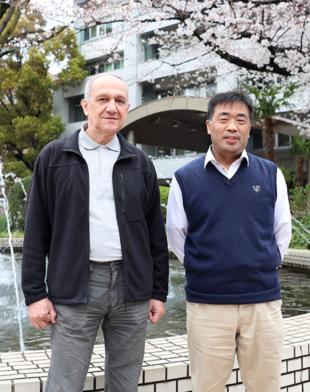
Hobara is also leading a global-scale electromagnetic observation network. This project involves analysis by humans and artificial intelligence of data from sensors installed by UEC across Japan plus data collected from abroad. The ongoing, real-time observation and analysis will also be used to make various kinds of predictions possible, such as space weather, extreme weather and even earthquakes. The university invited Alexander Shvets, a joint researcher on the project, and his wife from Kharkiv in Ukraine in mid-2022 so he can continue his researches in a safe environment.
Better self-driving vehicles
Another notable joint research effort that UEC engages in involves 15 researchers, including professor Celimuge Wu from UEC as well as professors from the National Institute of Informatics and Nagoya University in Japan and the University of Technology, the University of Auckland and the Victoria University of Wellington in New Zealand.
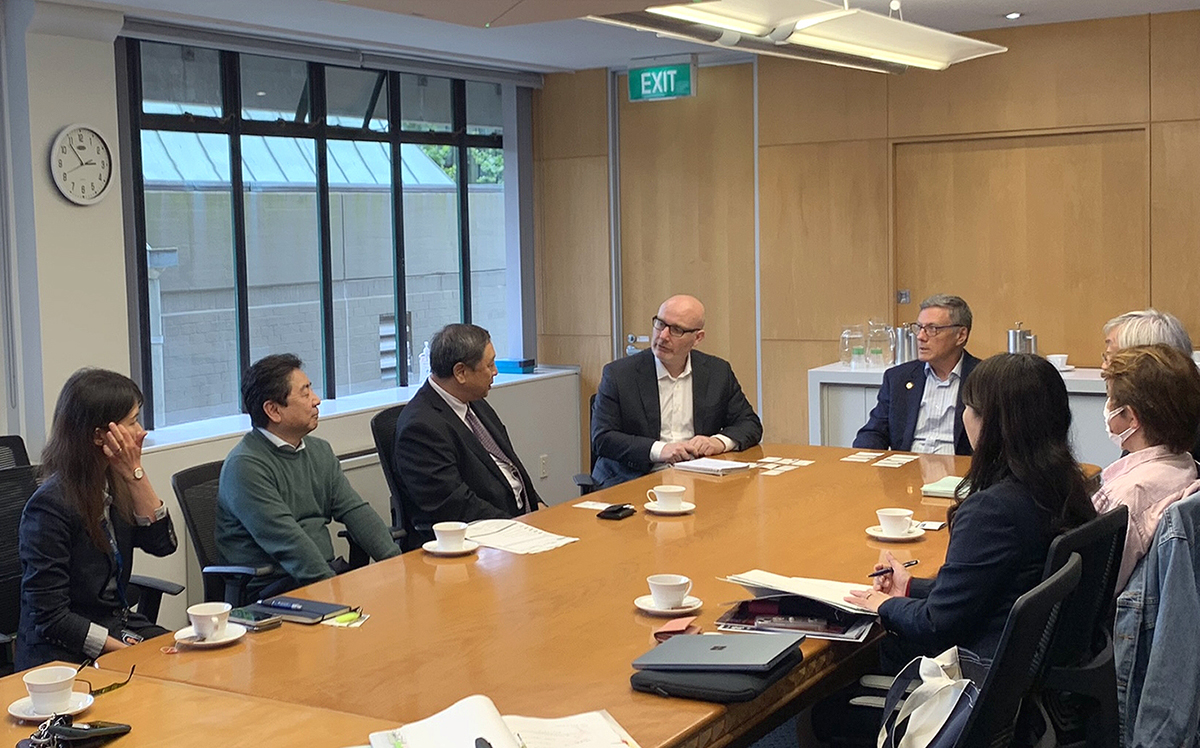
This research, funded by the Japan Society for the Promotion of Science since 2023, aims to fuse technologies for wireless networks and computers in order to establish collaborative control technologies that will allow self-driving vehicles to overcome problems of how to react to unexpected situations and achieve 100% prevention of accidents, plus determine the trustworthiness of information transmitted from other vehicles and efficiently share information while being conscious of privacy and network limitations.
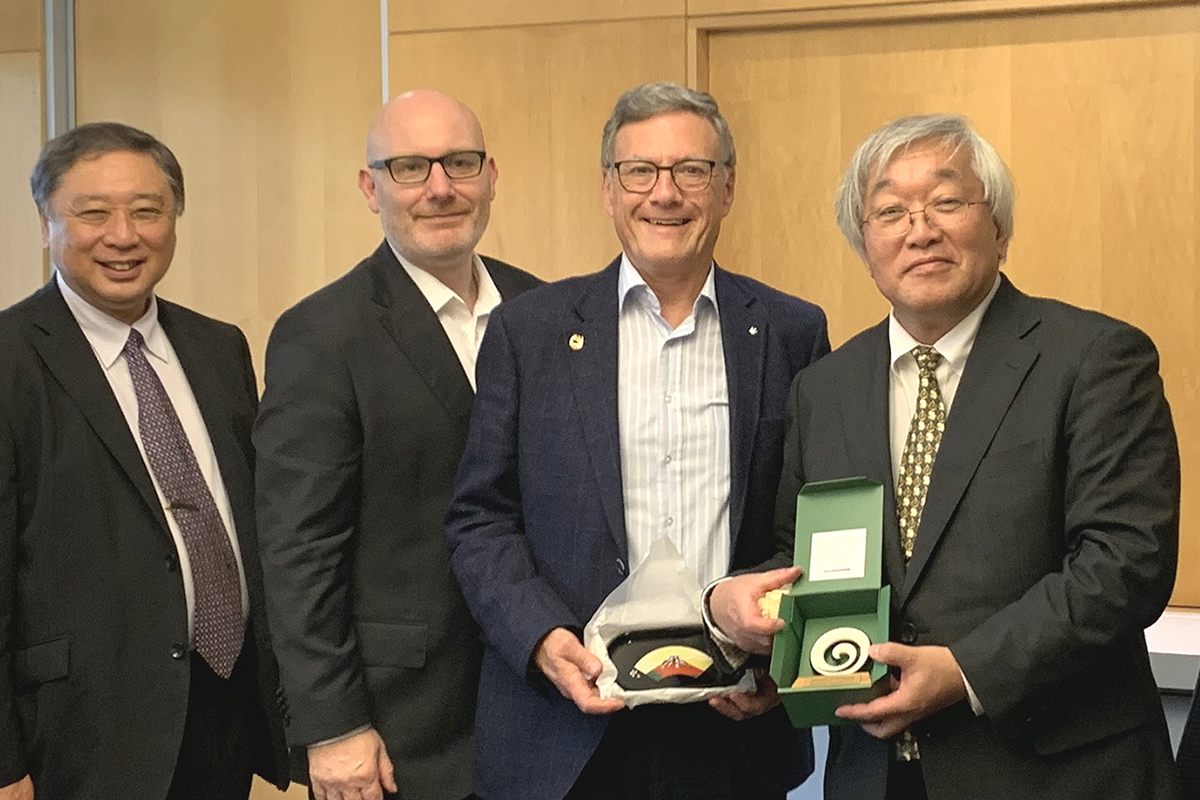
High-tech blueberries
One of the most recent projects is an agricultural project in Uzbekistan in partnership with Tashkent State Agrarian University and Tokyo University of Agriculture and Technology. Against the background of severe salt damage in western Uzbekistan due to depletion of the Aral Sea during Soviet times, a joint team that includes professor Kayoko Yamamoto and project/specially appointed professor Yo Ishigaki from UEC has been developing water-saving and high-value-added agricultural methods to grow medicinal herbs, vegetables and fruits in the area. One of the products that the project currently is focusing on is blueberries. “Blueberries are high-value and can be grown using pot cultivation system,” Tano said. He explained that the cultivation know-how provided by Tokyo University of Agriculture (TUAT) and Technology, together with technologies provided by UEC on digital twins, artificial intelligence, remote sensing and geographical information systems, will enable remote supervision, simulation and instruction by experts in Japan. The project has the potential to be applied to other developing countries and regions and other types of crops to enhance agricultural productivity.
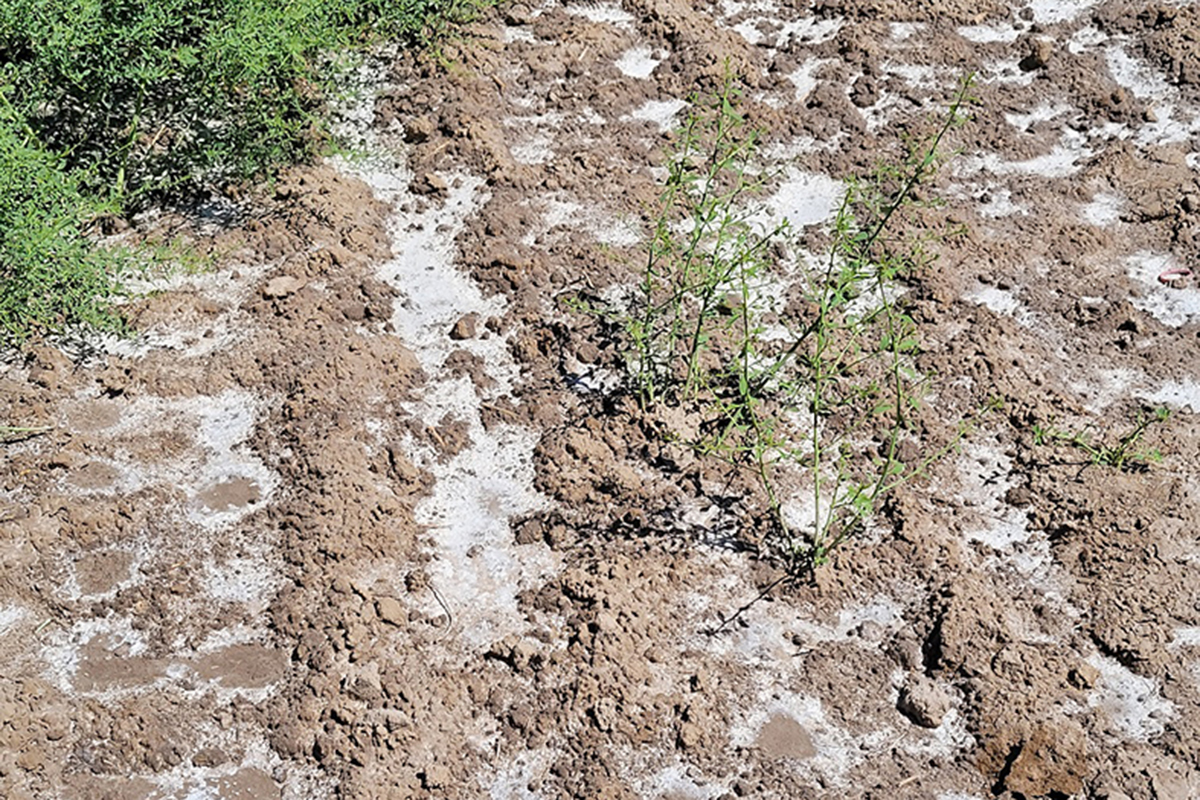
Tano pointed out that due to climate and environmental changes, methods that work today will not necessarily work tomorrow. “That is why we plan our projects from a long-term perspective, making sure that what we do fits the situation, and try to help society continue improving itself autonomously, as is expressed in our vision,” he said.
The project in Uzbekistan also has the participation of the Joint Doctoral Program for Sustainability Research, an integrated program involving the Tokyo University of Foreign Studies (TUFS), the Tokyo University of Agriculture and Technology and UEC. “Its aim is to bring together expertise of different types of highly professional universities to nurture human resources that can contribute to solving global issues in diverse areas such as poverty, conflicts, food, resources, energy, environment, life and health,” Tano said. All the classes are held in English, and about half of the current students and graduates are non-Japanese.
“Since this program was established in 2019, we already have alumni both in Japan and abroad. There are plans for the current students and alumni to conduct collaborative projects,” Tano said.
Students from abroad
Starting last October, the program has also started to accept Ph.D. students from abroad as part of the SDGs Global Leader program under the Japan International Cooperation Agency (JICA). The first student who was accepted into the joint doctoral program is from Kenya, working on research in the field of energy.
Foreign students are widely accepted in other departments as well, in undergraduate and graduate schools alike. As part of the government’s efforts to increase the number of foreign students who come to study in Japan, the Ministry of Education, Culture, Sports, Science and Technology has been leading an initiative that accredits various programs offered by Japanese universities and sponsors foreign students who have been recommended by universities to enroll in those programs.
So far, the university has been accredited for four programs, including two programs where new recruitments have ended. Seven master’s students and 35 doctoral students belonged to the two UEC programs as of March.
The university also has partnerships with three universities in France, Mexico and China to offer bilateral double-degree study abroad programs. A student from one of the three universities who is admitted to this program can earn a degree at his or her university as well as at UEC at almost the same time. “Such partnerships are expected to expand in other areas because there are other universities, especially in Asia, that are showing an interest,” Tano said. So far, the university has received more students than it has sent, but the number of applicants from UEC may increase as more and more Japanese students start to seek career opportunities overseas.
Foreign students who come on a short-term government exchange program named Japanese University Studies in Science and Technology (JUSST) generally stay for a year and take specialized courses held in English on subjects that help them acquire basic academic skills such as writing research papers and making presentations. “The unique thing about our university is that we also have teachers who can teach Japanese language and culture, so foreign students can receive both language training and specialized education on campus,” Tano said.
The number of short-term exchange students whom the university accepted through this program was 17 in 2023, on the rise again after the coronavirus pandemic. “We have so far accepted students from various partner universities across the world, such as the University of Bremen in Germany, the National Polytechnic Institute in Mexico and Tamkang University in Taiwan. International students can live in our dormitories. There are three dormitories, including UEC Port — a new dormitory offering two types of rooms, individual and shared, that was opened in 2017, commemorating the university’s 100th anniversary. In the shared-type rooms, international students mix and live with Japanese students, enjoying and learning from day-to-day cultural exchanges,” Tano said. Students meeting certain academic criteria can also receive a scholarship from the Japan Student Services Organization (JASSO.)
More Japanese overseas
A similar setup is available for Japanese students who wish to study abroad for a short time, and applicants who meet criteria set by the university can receive aid from the university’s own fund. There are internship opportunities for UEC students as well. The university has dispatched students to companies and research institutions in the United States, Italy and other countries. Those who participate in over 90 hours of internship are granted two credits.
One of the new programs launched to give UEC students international experience is a summer program at the University of Chicago. The two universities signed a partnership agreement in 2022, and the first group of students from UEC will engage in research activities at Chicago’s Department of Computer Science for eight weeks this summer.
There are 60 partner universities and research institutions, and UEC aims to further diversify and deepen its collaborations with them. In addition to joint research projects and student exchange programs, UEC also cooperates with its partner universities in organizing international conferences and events.
Last September, the 10th UEC Seminar in ASEAN was held at Suan Sunandha Rajabhat University in Bangkok, with the participation of 110 students and researchers from universities as well as government officials and corporate leaders in the ASEAN region. Since 2019, the ASEAN-UEC Workshop on Informatics and Engineering has been held in parallel, with students and faculty members of participating universities giving research presentations.
Last December, UEC and the University of Auckland jointly hosted the “Trans-Pacific Symposium on Advanced Science and Engineering 2023,” which gathered about 50 participants from the two universities.
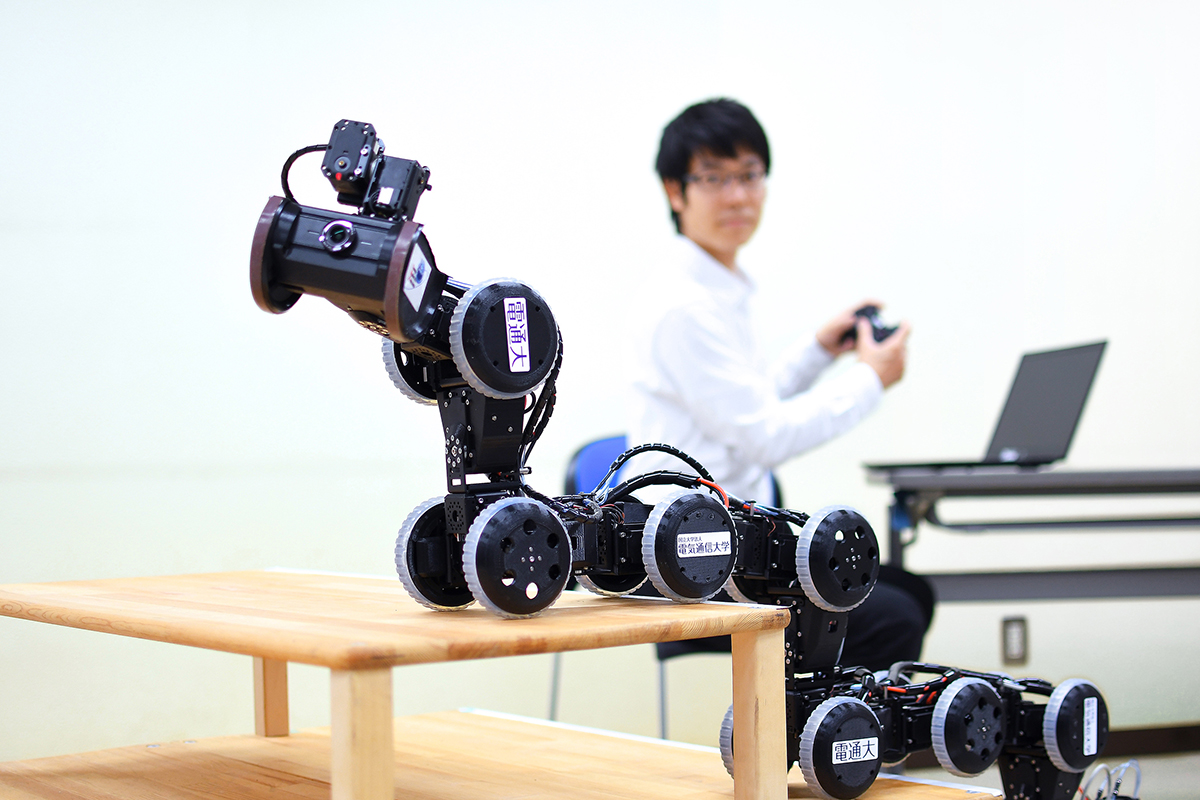
Cooperation on AI, robots
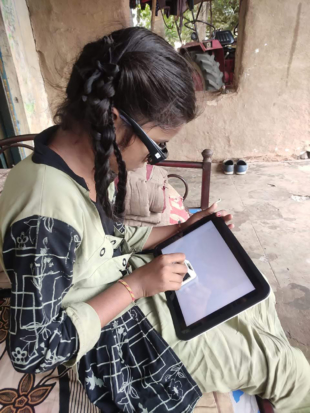
The Artificial Intelligence eXploration Research Center of UEC and the University of Auckland’s nonprofit company for turning “research into impact,” UniServices, aim to strengthen their relationship of mutual cooperation — especially in the fields of artificial intelligence, robotics, the Internet of Things and speech and language processing — and to engage more universities from New Zealand and other parts of Oceania in the symposium from this year on.
UEC has been building close relationships with Asian universities too. Students from China comprise 60% of all foreign students at UEC. There are many examples of joint research and student exchange with universities in Southeast Asian countries, including Vietnam, Thailand and Indonesia.
“We also signed a partnership agreement with a university in Greece in March and started a discussion with a university in Milan in Italy for a new partnership,” Tano said. The school has also been accepting many students from African countries such as South Sudan, Ethiopia, Burundi and Gabon as well as from South Asian countries like Pakistan and India. “We aim to continue enhancing our international collaborations with universities and research institutions in all regions of the world,” Tano said.
Page 8 and page 9 are sponsored by UEC
The University of Electro-Communications
1-5-1 Chofugaoka, Chofu, Tokyo 182-8585, Japan
https://www.uec.ac.jp/
https://www.uec.ac.jp/eng/
[email protected]




